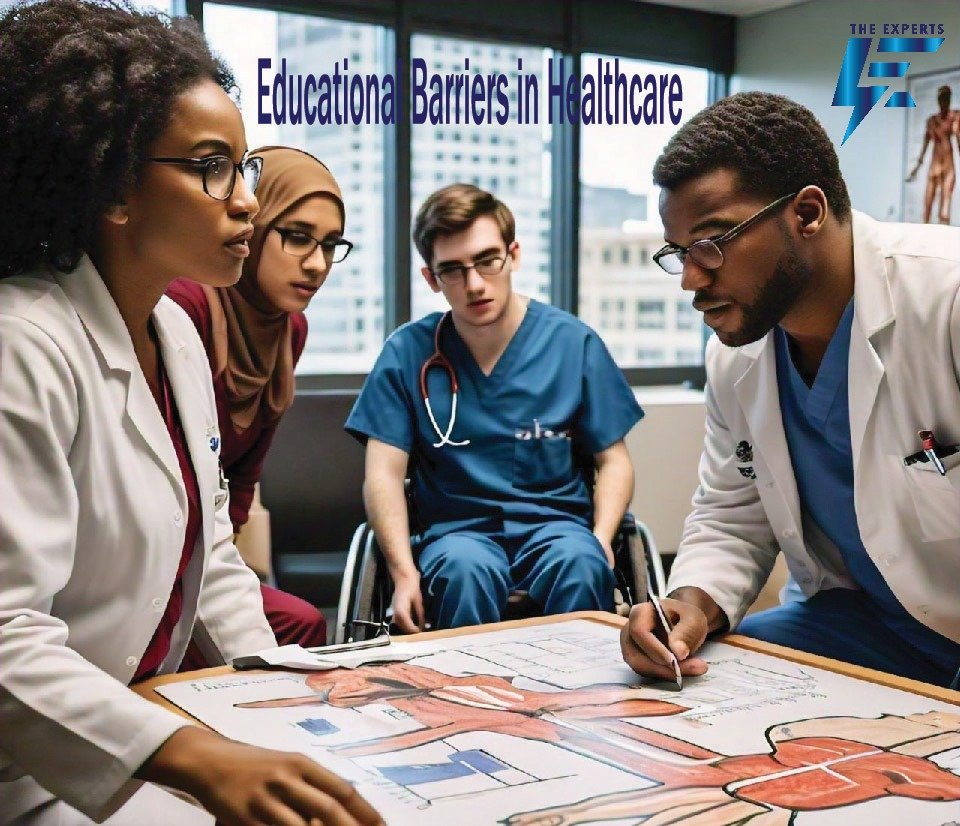Introduction
The provision of educational barriers in healthcare services is considered a basic human right for all individuals. However, several factors restrict the population from enjoying the same standard of health care services. Among these factors, challenges in the education sector are prominent hindrances to the provision of quality healthcare. In the healthcare setting, any factors commonly referred to as educational barriers are those that result in knowledge or comprehension disparities and hinder participation in health making. Overcoming these barriers is essential in improving the clinical outcomes of all patients, improving the efficiency of the health care workforce, and ensuring social justice in health care.
Types of Educational Barriers
Educational barriers in healthcare can be categorized into several key areas:
Lack of Awareness and Knowledge
In regards to the context, one of the main barriers is that the public does not know much about the various healthcare services and preventive measures available. A lot of people are not educated on their health status, treatment options, or preventative care. Such ignorance can cause late diagnosis, poor management of conditions, and ultimately worse health results.
Healthcare Provider Training:
This ever-existing challenge can be made worse by inadequate training of health care professionals. Where the providers are not familiar with recent findings, recommended treatments or means of educating children relatives, it becomes difficult for them to effectively inform their patients of the important details.
Language and Communication Issues
Inevitably, communication obstacles will affect healthcare service provisions. Non-native language-speaking patients may find it difficult to grasp some medical guidelines, signs, or procedures involving medication.
Health Literacy:
Among various demographics, health literacy ranges drastically. This in turn leads to difficulties in understanding and interpreting medical response or instructions and following treatment practices in patients with low health literacy.
Economic and Geographic Factors
Economic inequality usually affects the provision of educational resources. For instance, people residing in poor neighborhoods might lack nurse specialists or even basic health education programs, while geographical barriers in search of healthcare services and health programs limit exposure in learning in the case of rural set up.
| Factor | Urban Areas | Rural Areas |
| Access to Providers | High | Low |
| Availability of Resources | Abundant | Limited |
| Community Programs | Numerous | Few |
Technological Barriers
Considering the fact that healthcare is now becoming technologically advanced, those who are not well versed with digital skills and lack the necessary devices are likely to be disadvantaged. Such a digital divide may hinder the ability of the patients to seek online health resources, telehealth services and other learning materials.
Impact on Patients
The impact of educational barriers in healthcare is profound and multi-faceted:
Health Outcomes

Individuals with educational barriers in health care are less inclined to take measures towards prevention which, in turn, contributes to increased morbidity and mortality rates. Understanding treatment regimes can be an issue in relation to compliance and even treatment of chronic diseases, thus leading to segmentation of care such as non-attendance and complications like hospitalizations.
Patient Engagement and Empowerment
Education is a vital component of any effective healthcare system, because it empowers patients. Participation in health care decisions improves when patients have knowledge of their illness and treatment options. Otherwise, patients may disengage due to low health literacy, causing them to feel helpless about their health journeys.
Trust in Healthcare Providers
The key component in establishing the trust between the patient and the health care professional is the communication pattern. This communication pattern varies from one patient to another based on their understanding of the medical information provided. Lack of understanding may cause a sense of scepticism towards their health care provider, which in turn makes them less likely to follow treatment reasoning resulting in adverse health outcomes.
Impact on Healthcare Professionals
Educational barriers do not solely affect patients; they also pose challenges for healthcare professionals:
Professional Development
Continuous learning is necessary for healthcare practitioners in order to keep up with the ever-changing medical knowledge and medical practices. In situations where these educational resources are few and far between, the practitioners may lack some of the important skills that are required to offer effective patient care. This can prevent them from passing on vital health information and providing the right care instructions.
Interdisciplinary Collaboration
Providing care to patients in a comprehensive manner often involves engagement from several healthcare workers. Unfortunately, in some cases, these workers with differing educational levels may limit understanding and communication among team members, thus affecting the effective and efficient attendance of patients in an interdisciplinary context.
Strategies to Overcome Educational Barriers
Overcoming educational barriers in healthcare requires a multifaceted approach involving various stakeholders:
Community Outreach Programs
Programs based in the community can nicely overcome the distance between the health care practitioners and neglected health care seekers. These programs aim to organize health fairs, workshops, or mobile clinics in order to create more awareness and ease access to health services. More so, working closely with local trusts and support organizations can also improve the facilitation and implementation of these programs.
Enhancing Health Literacy
Advancing health literacy is essential to the empowerment of patients. Health practitioners should place more emphasis on the need to cut down on the use of complex vocabulary and instead use the help of pictures and relevant reading materials appropriate for the culture. Educating the different populations with their needs will go a long way in enhancing their understanding.
Technology and Telehealth Initiatives
Employing technology can provide solutions to challenges within the education system. For instance, an individual residing in a rural region can be able to access healthcare training faster through telehealth services. Both patients and healthcare workers can benefit from the active implementation of technology through the use of training programs which in turn enhance communication and sharing of information.
Policy Recommendations
It is crucial to support policies aimed at enhancing educational equity in healthcare. This involves among other things, increasing budgets for educational programs, backing campaigns geared to addressing health literacy, and enabling fair distribution of resources within different communities.
Case Studies
Successful Programs
The organization incorporates a distinctive illustration of outreach between the community and the organization through the ‘Health Promoters’ project in numerous Latino communities. Trained community health advocates at the grassroots level facilitate education on chronic disease management, nutrition, and preventive care. They have employed culturally appropriate materials and involved community members, which in turn have led to considerable transformation in the health status of these populations.
Lessons Learned
The shortcomings of certain health projects can often be seen due to the lack of sufficient community involvement. In reaching the population, the programs that tend to focus on ignore the cultural, economic and social settings of the group are most likely to fail. It is important to formulate educational interventions by involving relevant community stakeholders during the planning and implementation phases.
Comparative Analysis
The dimensional evaluation of health imparting education programs for urban and rural settings brings to light the access and effectiveness perspectives. Urban programs may have more resources and a far reach, while rural programs often face challenges due to geographic remoteness and resource constraints. Effective implementation should adjust strategies according to the prevailing circumstances in the performance context.
Conclusion
Educational barriers in healthcare present difficulty not only to the patients, but also to the providers of health services. If these barriers can be taken on by using some strategies, health results, patients’ participation, and equity in health care systems will be improved. In the future, it is imperative for agencies such as healthcare services, the government, and non-profit organizations to take part in designing, and putting into practice all the necessary education mechanisms. The purpose is so that everyone acquires the requisite information that will enable them manage their health issues adequately, hence improving overall health.
Read more about Education on The Experts Tech.

